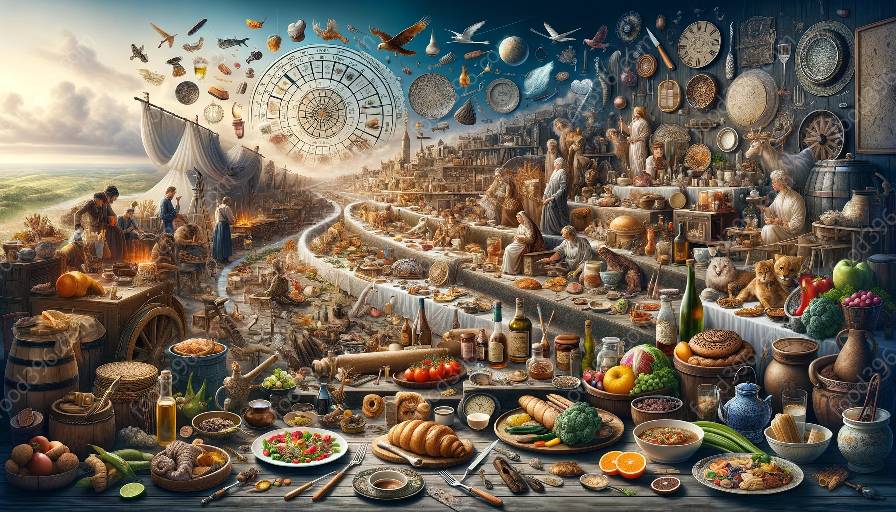Chinese cuisine is a rich tapestry woven from centuries of tradition, and at the heart of this culinary art lies the evolution of cooking utensils and equipment. From the humble wok to intricate bamboo steamers, these tools have played an integral role in shaping the flavors and techniques that define Chinese cuisine. In this exploration, we delve into the history and development of Chinese cooking utensils, tracing their evolution and examining their enduring influence.
Early Innovations: Prehistoric Origins
The origins of Chinese cooking utensils can be traced back to prehistoric times, where early Chinese civilizations relied on basic tools made from natural materials such as clay, wood, and stone. These primitive implements would later evolve into the diverse array of cooking instruments that we recognize today.
Neolithic Era: Pioneering Tools
During the Neolithic era, significant advancements in craftsmanship and culinary techniques laid the foundation for more sophisticated cooking utensils. Pottery emerged as a defining element of Chinese cookware, with clay vessels and pots becoming essential for food preparation and storage. The development of pottery not only revolutionized cooking methods but also set the stage for the emergence of iconic Chinese kitchenware.
The Influence of Tradition: Ancient Chinese Cooking Implements
As Chinese civilization flourished, so too did the diversity of cooking utensils and equipment. Each dynasty and region contributed to the evolution of culinary tools, resulting in a rich tapestry of implements that reflected both tradition and innovation. From the Tang Dynasty's mastery of metallurgy to the Song Dynasty's ingenuity in crafting delicate tea ware, the ancient Chinese were pioneers in developing utensils that would shape their cuisine for generations to come.
Key Innovations: Wok and Steamer
The wok, a versatile and ubiquitous symbol of Chinese cooking, represents centuries of ingenuity and cultural heritage ingrained within its design. Its iconic shape and functionality have made it a cornerstone of Chinese culinary tradition, allowing for a myriad of cooking techniques and flavor profiles. Similarly, the bamboo steamer, with its delicate construction and ability to impart a unique flavor to foods, stands as a testament to the resourcefulness and creativity of Chinese cooks throughout history.
Modern Advancements: Contemporary Chinese Kitchenware
With the passage of time, Chinese cooking utensils continued to evolve, adapting to changing culinary practices and technological advancements. The incorporation of stainless steel, non-stick coatings, and innovative designs has broadened the repertoire of Chinese chefs, enabling them to explore new culinary frontiers while honoring age-old traditions.
Cultural Significance: Symbolism in Chinese Utensils
Chinese cooking utensils are not just practical tools; they also carry deep cultural symbolism. Each utensil holds a significance rooted in Chinese traditions and beliefs, often serving as a link to ancestral heritage and the interconnectedness of food, family, and community.
Interconnected Histories: Chinese Cuisine and Culinary Implements
The evolution of Chinese cooking utensils is inseparable from the history of Chinese cuisine itself. These implements are not mere tools for food preparation; they embody the essence of China's culinary heritage, representing the ingenuity, creativity, and resourcefulness of its people. Through their continued use and adaptation, Chinese cooking utensils have become an integral part of the cultural identity and gastronomic legacy of Chinese cuisine.
Influence on Culinary Techniques: Shaping the Art of Chinese Cooking
From stir-frying to steaming, the design and functionality of Chinese cooking utensils have profoundly impacted the techniques and flavors that define Chinese culinary artistry. The versatility and precision of these tools have enabled chefs to perfect time-honored recipes while innovating new dishes, showcasing the dynamic nature of Chinese cuisine.
Preserving Tradition: Resilience and Continuity
Despite the evolution of cooking technology and the integration of modern materials, traditional Chinese cooking utensils endure as a testament to the enduring legacy of culinary traditions. The preservation of these age-old tools not only honors the craftsmanship of the past but also serves as a bridge between generations, ensuring that the art of Chinese cooking remains deeply rooted in its cultural history.
Innovating for the Future: Adaptation and Progress
As Chinese cuisine continues to captivate palates worldwide, the evolution of cooking utensils stands at the intersection of tradition and innovation. From traditional handcrafted implements to cutting-edge kitchen gadgets, the ongoing evolution of Chinese cooking utensils reflects a commitment to preserving culinary heritage while embracing the possibilities of the future.

